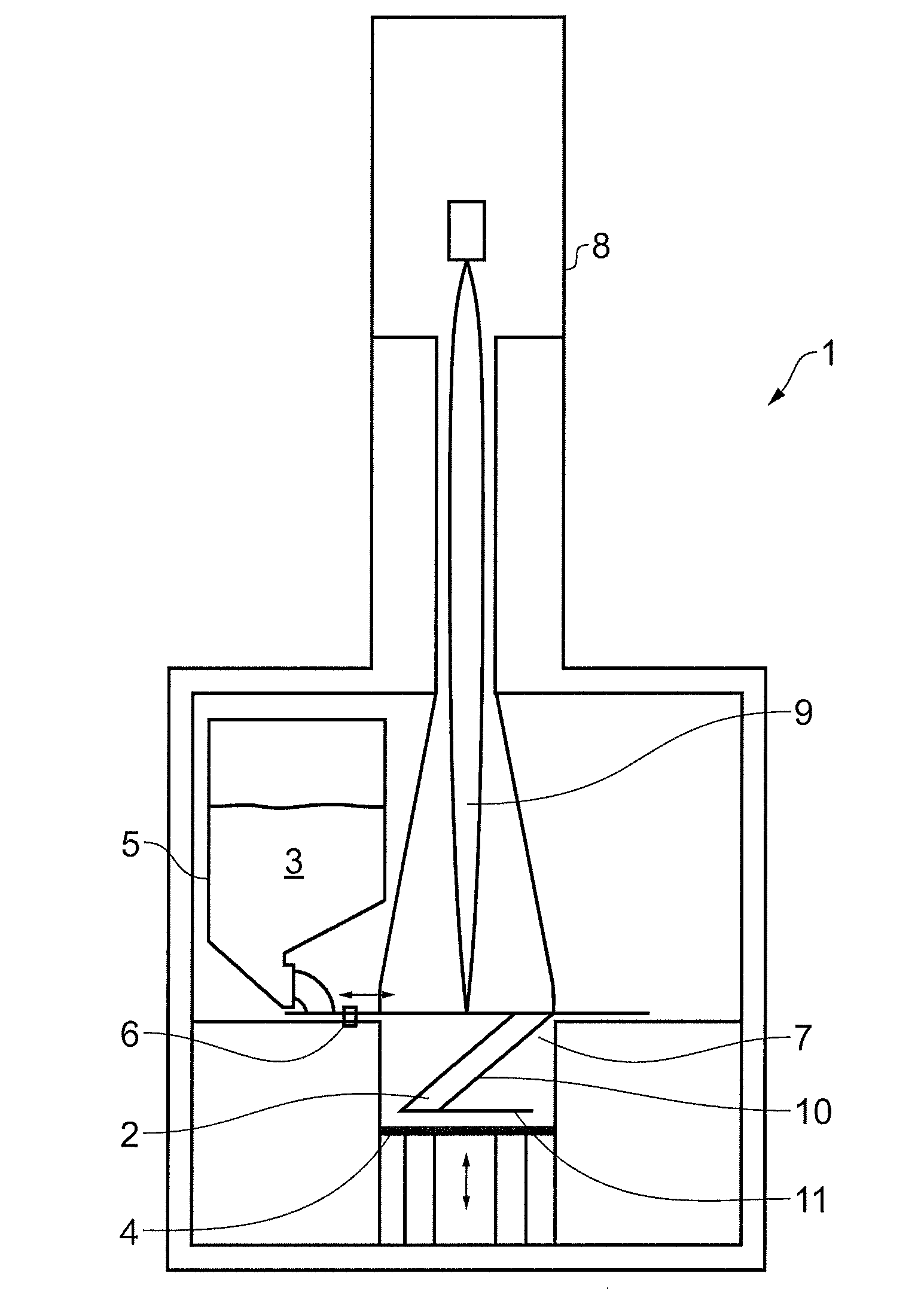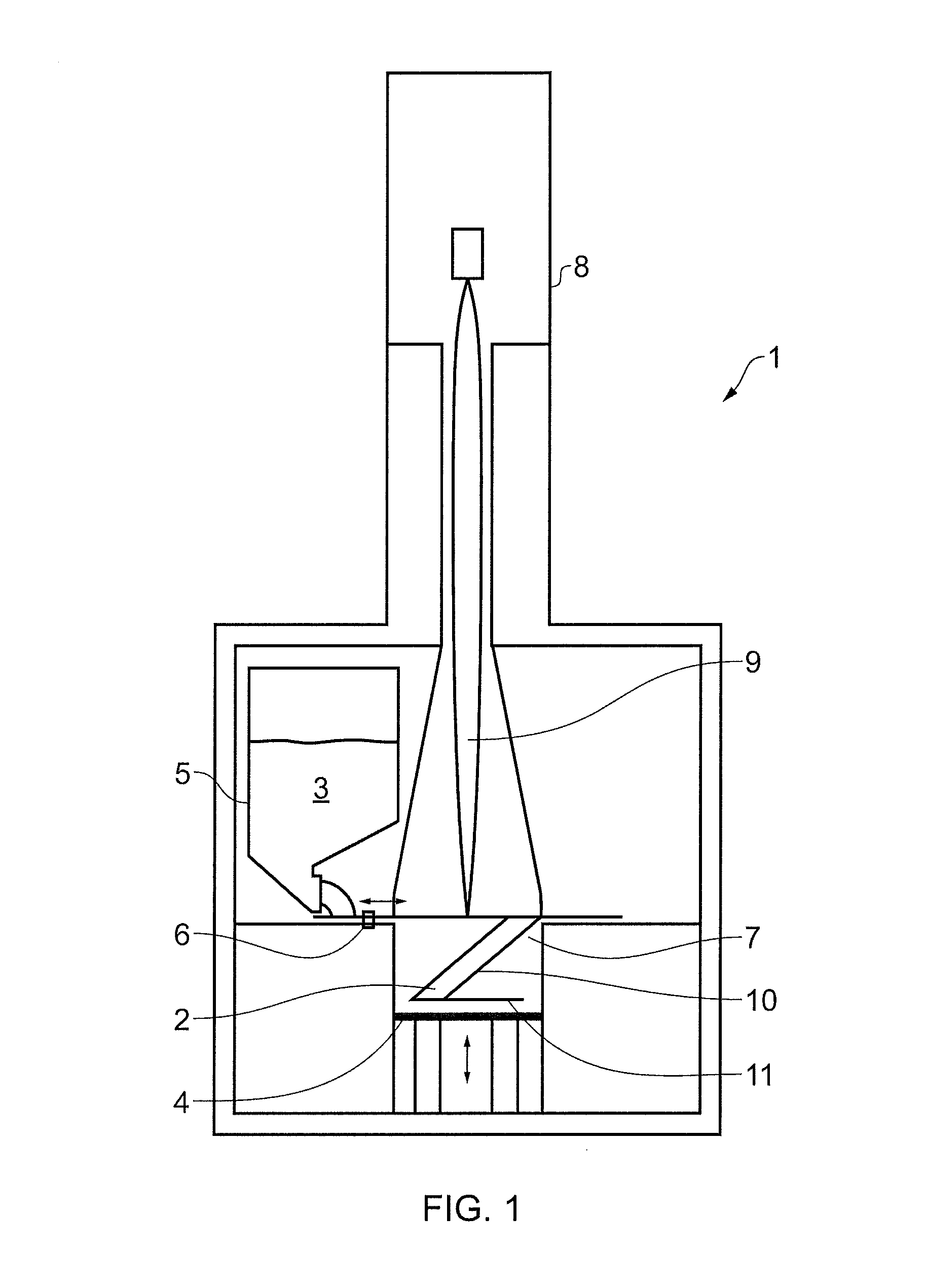Additive layer manufacturing method
- Summary
- Abstract
- Description
- Claims
- Application Information
AI Technical Summary
Benefits of technology
Problems solved by technology
Method used
Image
Examples
Embodiment Construction
[0047]Turning now to consider the drawings in more detail, the method of the present invention will now be described in detail, with particular reference to FIGS. 6 to 16.
[0048]The technical effect of the present invention can most easily be understood with regard to FIGS. 6 and 7 which show a product 20 which is manufactured by the method of the invention. The product 20 illustrated in FIGS. 6 and 7 is a metal product and is formed via an ALM method from metal powder.
[0049]As illustrated most clearly in FIG. 6, the product has a horizontally oriented lower surface 21 which is downwardly facing. FIG. 6 also shows the downwardly facing surface 21 being supported by a plurality of narrow and elongate support pins 22 which extend downwardly from the downwardly facing surface 21.
[0050]FIG. 7 shows the arrangement of the support pins 22 as viewed from below the product 20 and shows the support pins 22 arranged in a generally regular array across the downwardly facing surface 20. The pins...
PUM
| Property | Measurement | Unit |
|---|---|---|
| Diameter | aaaaa | aaaaa |
| Diameter | aaaaa | aaaaa |
| Area | aaaaa | aaaaa |
Abstract
Description
Claims
Application Information
 Login to View More
Login to View More - R&D
- Intellectual Property
- Life Sciences
- Materials
- Tech Scout
- Unparalleled Data Quality
- Higher Quality Content
- 60% Fewer Hallucinations
Browse by: Latest US Patents, China's latest patents, Technical Efficacy Thesaurus, Application Domain, Technology Topic, Popular Technical Reports.
© 2025 PatSnap. All rights reserved.Legal|Privacy policy|Modern Slavery Act Transparency Statement|Sitemap|About US| Contact US: help@patsnap.com



